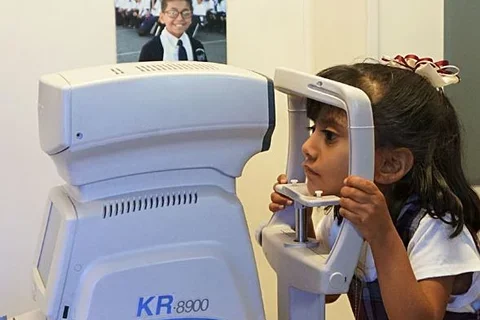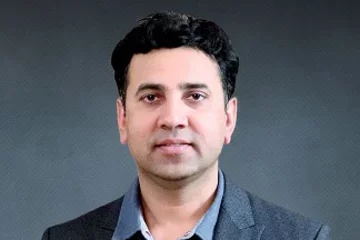Students who receive glasses through vision program do better in school, UCLA study finds

Low-income children who had been struggling in school because of poor eyesight became more focused and engaged in their work after receiving free eye exams and glasses from a nonprofit program, UCLA researchers found.
Students from three Los Angeles elementary schools told researchers that they were doing better in school and were happier to be there. Teachers and parents said the students behaved better in class and read more.
"They can see the words so they are more apt to practice reading because it's not such a task for them," one teacher said.
The study, which appeared in the May 2016 edition of Maternal and Child Health Journal, shows that programs that increase the ownership and use of glasses may boost academic performance and student well-being.
The students received their glasses from Vision To Learn, a program that partners up with schools to give glasses to children who cannot afford them. School nurses perform school-wide vision screenings and refer students with bad vision to the program. Then, a mobile eye clinic, staffed by a pediatric optometrist, visits the school. Students referred to the program receive a comprehensive eye exam and choose frames from a variety of styles and colors.
These services, which are free to families, include a replacement pair in the event of damage or loss of the glasses. The program covers the cost of the frames, prescription lenses, eye exam, and program administration.
Up to 20% of school children have vision problems, 80% of which can be corrected with glasses. Low-income and minority children are disproportionately affected by uncorrected vision problems because of decreased access to glasses and increased occurrence of vision problems.
Several studies show associations between vision problems, poor school performance, and lower quality of life. Vision problems are associated with poorer grades, poor classroom behavior, a disruptive school environment, lower test scores, and even school failure or dropout. However, few studies have examined the impact of corrective lenses on academic achievement and well-being.
The UCLA study recruited Vision To Learn participants at three elementary schools that serve mostly Latino students. At each school, three focus groups were formed: the parent group, the teacher group, and the student group. A total of 20 parents, 25 teachers, and 21 students participated. The parent group discussion was conducted in Spanish while the student and teacher groups were conducted in English to better understand issues and benefits regarding glasses.
When discussing the experience of obtaining glasses, all groups talked about how students had improved grades and overall academic performance. Students also reported increased willingness to participate and improved concentration in class. When discussing the benefit of free school-based eye exams, the adult groups reported that providing free services removed financial barriers to students receiving glasses. Since many students received glasses at school at the same time, they felt more comfortable wearing them around their peers.
The most surprising finding was the large amount of stress vision problems placed on teachers, parents and students, Dr. Rebecca Dudovitz, the lead investigator, said.
Teachers reported stress related to managing a classroom with students who might be disruptive due to their poor vision, which modifies the learning environment for all students. Parents felt stress because they could not afford the glasses that their children needed. Students reported having headaches and eye strain as well as getting in trouble for poor behavior and academic performance.
"When I didn't have glasses, I had bad grades and my mom and dad weren't happy," one child said.
"I saw blurry. My teacher said that I had to move from my friends because I couldn't see," another child told researchers.
The study shows the benefits of directly partnering with schools to give children the vision care they need. Equipped with glasses, students had greater focus, participation, effort, homework completion, and improved overall academic skills.
"We all have an investment in making sure our children are supported to do well in school and be successful," Dr. Dudovitz said. "For the cost of basically $100, making sure a child can see may be a very simple intervention that can have in impact on their academic future."
Dr. Dudovitz, a CTSI KL2 scholar, said that her team is continuing to follow the students and will be looking more closely at the changes in students' grades before and after they receive glasses to provide further evidence to policy makers showing the benefits of glasses in an academic setting.
"I have an interest in school health and the interplay between academic achievement and health for kids," Dr. Dudovitz said. "It makes me think about both how academic achievement impacts health for children and their futures and also what kinds of health services kids need to come to school healthy and ready to learn."
More information:
About the writer: Amjad Murdos is a second-year UCLA undergraduate from Rochester, Minn. He is studying psychobiology.
Read the study in Maternal and Child Health Journal
Explore the data at Vision To Learn's website
Image caption:
Image source:



